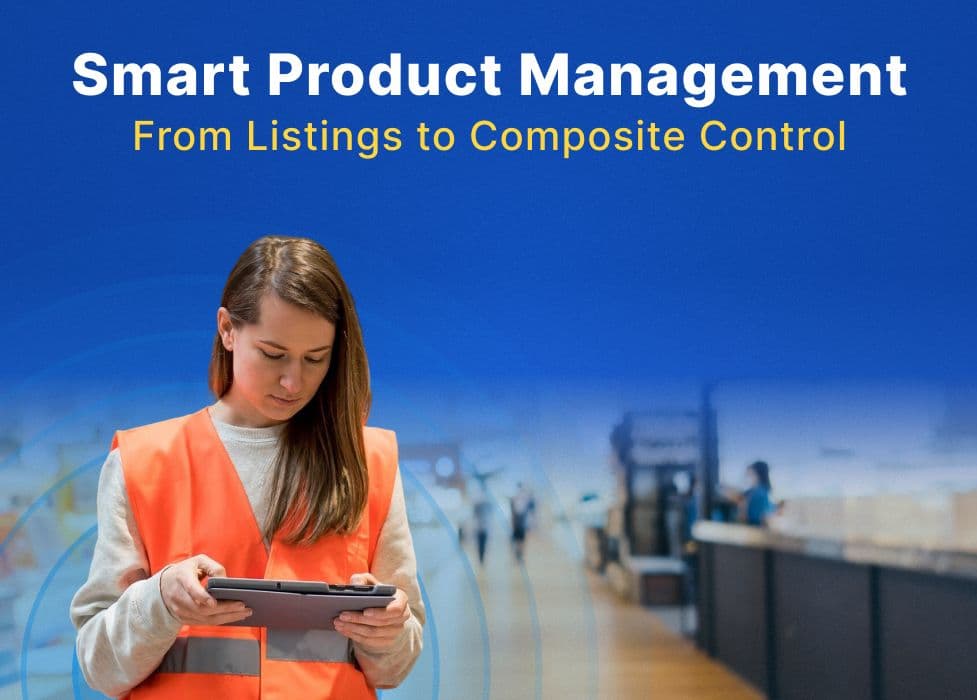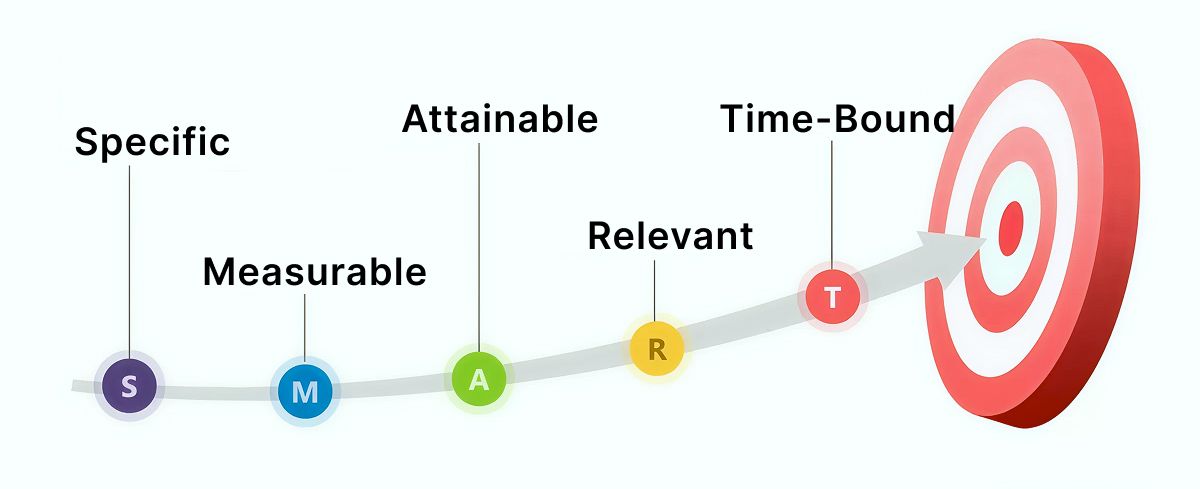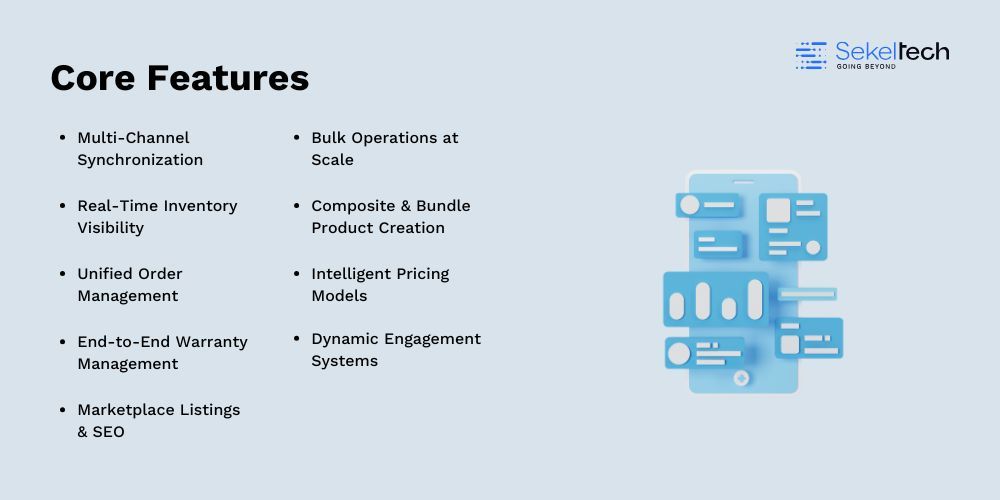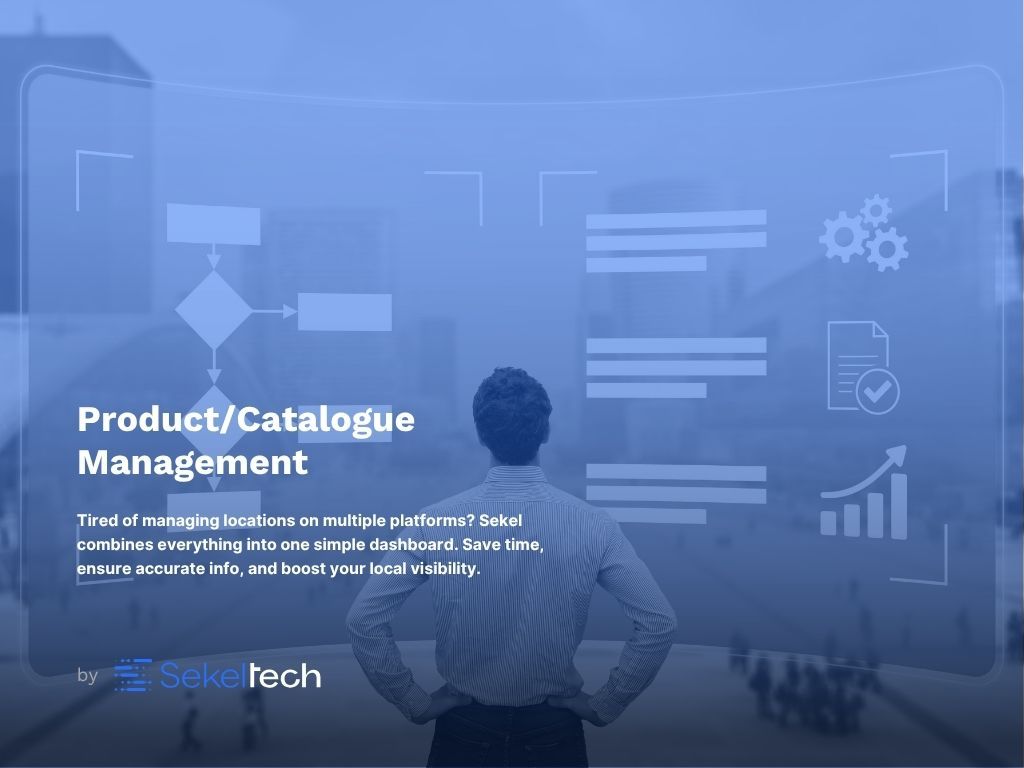Product Management
Smart Product Management: From Listings to Composite Control
Thu, 19 Jun 2025 11:10:39 GMT
Speak to our Hyperlocal Expert

In today’s fast-moving digital world, managing your products smartly is no longer a choice - it’s a necessity. Smart Product Management means using the right tools and strategies to control everything about your products - from how they’re listed online, to managing stock levels, pricing, and even customer service. Earlier, businesses managed products on each platform separately. But now, with customers shopping across websites, apps, and physical stores, that method just doesn’t work anymore.
To succeed, you need -
- Real-time updates of your listings and inventory
- Consistent product information everywhere
- Smart pricing that adapts to the market
- And tools that help manage everything from one place
That’s where Hyperlocal Product Management steps in. It focuses on managing product listings, inventory, and promotions at a local level, helping you reach nearby customers more effectively - whether they’re browsing online or walking into your store.
This blog will walk you through how to go beyond basic listings and take full composite control of your product strategy - making your business faster, smarter, and more customer-friendly.
What is Smart Product Management?

Smart Product Management is all about managing your product data, listings, inventory, and pricing intelligently and efficiently across all channels and touchpoints. It combines strategy, technology, and automation to ensure every product is listed, sold, tracked, and serviced in the smartest possible way.
SMART Framework in Product Strategy
The concept follows the SMART goal-setting approach—ensuring your product management efforts are:
- Specific: Clear objectives for each product across channels
- Measurable: Track performance like views, conversions, and returns
- Achievable: Ensure goals are realistic given available resources
- Relevant: Align product efforts with business and market needs
- Time-bound: Use timelines for launches, promotions, or updates
This keeps your product strategy focused, actionable, and aligned with business goals.
Product Lifecycle: From Creation to Service
Smart Product Management covers the full product journey:
1. Creation & Listing - Launch products with channel-optimized listings
2. Bundling & Pricing - Package items for better value and upselling
3. Inventory & Order Management - Track stock and fulfill orders in real time
4. Servicing & Warranty - Manage post-purchase support and returns
With automation and integration, all these steps can be streamlined to avoid delays, reduce errors, and improve efficiency.
Strategic Benefits of a Unified System
A smart system connects all aspects of product operations, offering benefits like:
- Real-time updates across all platforms and sales channels
- Consistent product data that builds customer trust
- Dynamic pricing that adapts to market demand
- Reduced manual work and operational errors
- Better decision-making through centralized analytics
Ultimately, Smart Product Management allows businesses to scale operations, improve customer experience, and boost profitability, especially when combined with hyperlocal and omnichannel strategies.
Read Also - Product Catalogue Management: Top 10 Examples in 2025
Core Features Overview: Tools That Power Smart Product Management

Smart Product Management relies on a suite of powerful, integrated tools that help businesses operate efficiently, reduce manual work, and deliver a seamless experience across platforms. These features form the backbone of a smart, scalable, and hyperlocal product strategy:
1. Multi-Channel Synchronization
Keep product listings, inventory levels, pricing, and order statuses in sync across platforms in real-time.
2. Real-Time Inventory Management
Track stock levels live across warehouses and stores. Get automated alerts, predictive analytics, and AI-powered stock recommendations.
3. Order & Fulfillment Automation
Centralize and automate order processing, routing, shipping, invoicing, and returns across all marketplaces and physical locations.
4. Warranty & Service Control
Manage digital warranty registrations, service workflows, repairs, and customer communication from one intelligent dashboard.
5. Marketplace Listing Optimization
Automate listing creation, monitor listing performance, and optimize for visibility and compliance on each marketplace platform.
6. Keyword & SEO Tagging
Use AI-driven keyword suggestions to optimize product titles and descriptions, improving search performance and local visibility.
7. Bulk Listing Management
Easily manage large volumes of listings with mass import/export, template-based uploads, and scheduled edits across channels.
8. Composite & Bundle Product Management
Create and manage complex products, kits, and bundles with dynamic pricing, component inventory tracking, and intelligent upsell logic.
9. Smart Pricing Intelligence
Monitor competitors, apply AI-based dynamic pricing strategies, and optimize for profit margins, demand, and market trends.
10. Dynamic Engagement (Merchant, Manufacturer, Customer)
Connect and collaborate with all stakeholders - retailers, brands, and end customers - through personalized engagement, data sharing, and automation.
In-Depth: Smart Product Management Capabilities
Capability | Advanced Features | Real-Life Impact |
| 1. Multi-Channel Synchronization | - Real-time sync of listings, prices, and inventory across platforms - Cross-platform order updates - Channel-specific content formatting | - 40–60% increase in market reach - 90% fewer listing errors - Seamless customer experience |
| 2. Real-Time Inventory Visibility | - Live stock tracking across warehouses - Predictive analytics & AI safety stock management - RFID/barcode integration | - 50% fewer stockouts - 30% less overstock - Better demand planning |
| 3. Unified Order Management | - Centralized order processing - Auto-routing to warehouses - Returns & refund workflows - Carrier integrations | - 60% faster fulfillment - Improved order accuracy - Fewer missed SLAs |
| 4. End-to-End Warranty Management | - Digital warranty registration - Auto warranty expiry notifications - Claim workflows - Customer warranty portal | - 70% reduction in service response time - Increased customer trust - Lower service costs |
| 5. Marketplace Listings & SEO | - AI-based keyword optimization - A/B testing for titles/descriptions - Category compliance tools - Local SEO & multi-currency support | - 25–35% higher conversion rates - Better search rankings - Stronger visibility in local markets |
| 6. Bulk Operations at Scale | - Bulk uploads/edits - Template-driven listing creation - Scheduled operations - Error handling & rollback | - 70–80% time savings - Scales 10x more products - Greater operational control |
| 7. Composite & Bundle Product Creation | - Component-level inventory tracking - Dynamic pricing for kits - Cross-sell recommendations - Custom bundles for promotions | - 20–30% higher order value - Better personalization - Competitive differentiation |
| 8. Intelligent Pricing Models | - Real-time competitor price tracking - Demand-based dynamic pricing - Geographic & time-based pricing strategies | - 15–25% margin improvement - Faster pricing updates - Greater competitiveness |
| 9. Dynamic Engagement Systems | - Merchant & manufacturer dashboards - Customer personalization tools - Loyalty & review integrations - Chatbot support | - 30–40% higher customer retention - Better collaboration across ecosystem - Enhanced customer loyalty |
Hyperlocal Product Management: The Competitive Edge
In today’s experience-driven market, customers expect real-time availability, location-specific offers, and instant gratification. That’s where Hyperlocal Product Management steps in - empowering businesses to manage and deliver product information tailored to specific geographies, right down to a single store or service zone.
Why Hyperlocal Matters Across Industries
Whether you’re a retailer, a D2C brand, or a service provider, managing your product catalog with a hyperlocal lens can unlock major growth:
- Retailers can display store-specific availability, pricing, and offers
- D2C brands can drive visits to pop-ups, brand stores, or experience centers
- Service-led businesses can promote geo-specific services, timings, and support
By targeting users based on their exact location, businesses can significantly improve visibility, relevance, and conversions.
Real-Time Inventory & Location-Based Pricing
Hyperlocal product management allows businesses to
- Show accurate stock levels by city, store, or warehouse
- Adjust pricing dynamically based on location, demand, or competition
- Prioritize stock based on hyperlocal buying patterns and trends
This ensures your listings reflect what’s available - reducing customer frustration and improving fulfillment speed.
Localized Listings That Drive Engagement
- Automatically adapt product names, descriptions, and promotions by geography
- Run geofencing campaigns tailored to local events, festivals, or behaviours
- Leverage multilingual content and city-specific personalization
By speaking the customer’s language - literally and contextually - you build trust and relevance.
Drive Footfalls with Local Discovery Tools
- Highlight in-store availability with “Buy Online, Pick Up in Store” options
- Promote local discounts to nearby shoppers
- Use Google My Business, Maps, and local search tools to drive physical visits
Hyperlocal visibility ensures customers nearby can find your products both online and offline, boosting in-store conversions and brand recall.
Respond to Intent in Real Time
When customers search for “mobile repair near me” or “best sofa in Andheri,” your listings dynamically respond with:
- Live availability at the nearest store
- Hyper-relevant offers and pricing
- Real-time updates across platforms and search engines
This ensures you capture local intent exactly when and where it happens—turning browsers into buyers, and footfall into revenue.
Sekel Tech: Enabling Smart & Hyperlocal Product Management

Sekel Tech empowers brands and retailers to take full control of their product ecosystem through a platform designed for Smart Product Management. Whether you're managing thousands of SKUs across regions or targeting customers within a 5 km radius, Sekel Tech ensures your product data is accurate, dynamic, and locally optimized—everywhere your customers search.
Smarter Product Management, Built for Scale
Sekel Tech’s platform simplifies complex catalog operations with real-time control over:
1. Multi-Channel Listings
Manage product content across Google Business Profiles, microsites, marketplaces, and e-commerce platforms—all from one smart dashboard.
2. Dynamic Catalogue Optimization
Enable channel-specific formatting, real-time availability sync, and AI-powered keyword tagging to enhance visibility and conversion across every listing.
3. Intelligent Bundles & Composite Products
Create location-based bundles or multi-component products with automated pricing and inventory logic.
4. End-to-End Order & Inventory Management
Track, route, and fulfill orders across locations with real-time inventory updates, predictive analytics, and automated stock allocation.
Hyperlocal Product Management That Converts
What sets Sekel Tech apart is its focus on hyperlocal relevance—turning digital product visibility into local footfalls and high-intent leads.
1. Real-Time Hyperlocal Inventory Sync
Showcase what’s in stock at each specific store, in real time, to improve local discoverability and avoid lost sales.
2. Geo-Targeted Product Listings
Customize descriptions, language, offers, and pricing by region or store to maximize local engagement.
3. Google Map & GMB Integration
Make your products findable at the exact moment of intent—when customers search nearby on Google or Maps.
4. Personalized Customer Engagement
Enable smart product recommendations, loyalty campaigns, and service workflows based on local behavior and preferences.
Want to know who’s behind these smart solutions? Watch how Sekel Tech empowers businesses to scale faster and smarter. "What is Sekel Tech and How Does It Empower Brands & Retailers?"
Business Impact with Sekel Tech
By combining smart automation with hyperlocal intelligence, Sekel Tech delivers measurable outcomes:
- Up to 50% increase in high-quality local leads
- 70–80% reduction in manual catalog work
- 30–40% improvement in customer retention and satisfaction
- Real-time visibility across all customer touchpoints—digital and physical
From local stores to enterprise chains, Sekel Tech’s unified platform makes Smart and Hyperlocal Product Management not just possible, but profitable.
Business Benefits of Smart Product Management

Implementing a robust Smart Product Management system can deliver transformative outcomes across the business. From revenue gains to long-term scalability, the benefits are both immediate and strategic.
1. Revenue & Sales Growth
- Expand reach with multi-channel product visibility
- Improve conversion with optimized, channel-specific listings
- Increase average order value through bundles and composite offerings
- Capture high-intent local traffic with hyper-targeted engagement
2. Operational Efficiency
- Reduce manual work through automation (up to 80%)
- Eliminate data silos with unified product control
- Minimize stockouts and overstocks through real-time inventory sync
- Streamline order processing and fulfillment with integrated workflows
3. Customer Experience Enhancement
- Ensure consistent product data across all platforms
- Deliver localized experiences through geo-specific listings and pricing
- Improve service responsiveness with automated warranty and support flows
- Offer personalization based on behavior, geography, and intent
4. Data-Driven Decision Making
- Leverage real-time analytics on listings, sales, and inventory
- Gain visibility into customer behaviors, trends, and preferences
- Use predictive insights for demand planning and stock allocation
- Optimize pricing and marketing based on performance metrics
5. Competitive Advantage
- Respond faster to market shifts with agile product updates
- Offer unique value through personalized bundles and local experiences
- Strengthen brand perception with high accuracy and fulfillment speed
- Outperform competitors with smart automation and hyperlocal targeting
6. Risk Mitigation
- Reduce human errors with validation and automation
- Manage compliance, warranties, and quality more effectively
- Minimize inventory losses and overstock-related risks
- Improve customer satisfaction to lower churn and negative feedback
7. Financial Impact
- Drive 25–50% revenue growth through optimized product reach
- Cut operational costs by 20–35%
- Improve margins with intelligent pricing and bundling
- Enhance cash flow through better inventory control
8. Long-Term Strategic Benefits
- Lay the foundation for digital transformation and innovation
- Attract strategic partnerships through operational maturity
- Support global expansion with scalable systems
- Enable sustainable growth through smart operations and data intelligence
Smart product management doesn’t just organize your data—it fuels discoverability and demand. See how
Frequently Asked Questions (FAQs)
1. How secure is the data on Sekel Tech’s Smart Product Management platform?
Sekel Tech follows enterprise-grade data security standards, including encrypted data transfers, role-based access control, and regular security audits. Your product, inventory, and customer data are safeguarded to ensure operational continuity and compliance.
2. How can AI-powered keyword optimization improve my product listings?
AI-powered keyword tagging identifies high-performing and long-tail keywords tailored to your category and platform. This boosts your listings’ visibility in search results, improves click-through rates, and increases chances of conversion across Google, marketplaces, and local directories.
3. What is the difference between composite products and bundle products?
Composite products are assembled from multiple components, often with dynamic pricing and inventory tracking per part (e.g., a computer built from individual parts). Bundle products are grouped items sold together at a promotional price to increase average order value (e.g., a shampoo + conditioner combo).
4. How does real-time inventory management benefit my business operations?
Real-time inventory management ensures you always display accurate stock levels across all platforms. This minimizes stockouts and overselling, improves customer trust, and enables smarter purchasing decisions through automated alerts and predictive analytics.
5. How does Hyperlocal Product Management help in driving store-level sales?
Hyperlocal Product Management focuses on customizing listings, pricing, and inventory based on the specific needs and behavior of customers in a defined local area. This approach helps increase footfalls, improves visibility in “near me” searches, and leads to higher conversion rates at the store level.
Conclusion: The Shift to Intelligent Product Ecosystems
The era of static listings is over. Modern businesses need smart, dynamic, and hyperlocal product management to stay relevant and profitable in a fast-moving marketplace.
From managing multi-channel listings and real-time inventory to delivering personalized, geo-targeted engagement, the transition to an intelligent product ecosystem is not just a trend—it’s a competitive necessity.
Sekel Tech stands at the forefront of this transformation, enabling businesses to drive visibility, engagement, and conversions with precision and scale.
👉 Ready to transform your product operations?
Explore Sekel Tech’s Smart Product Management Suite to scale your sales, cut operational costs, and build lasting customer loyalty.
Read More Blogs -
1. Hyperlocal Review Management for Multi-Channel Integration
2. How a Content Management System Drives Digital Success
3. Dynamic Hyperlocal Store Locator: Advanced Features in 2025
Share
Similar Blogs
Loved this content?
Sign up for our newsletter and get the latest tips & updates directly in your inbox.
There’s more where that came from!